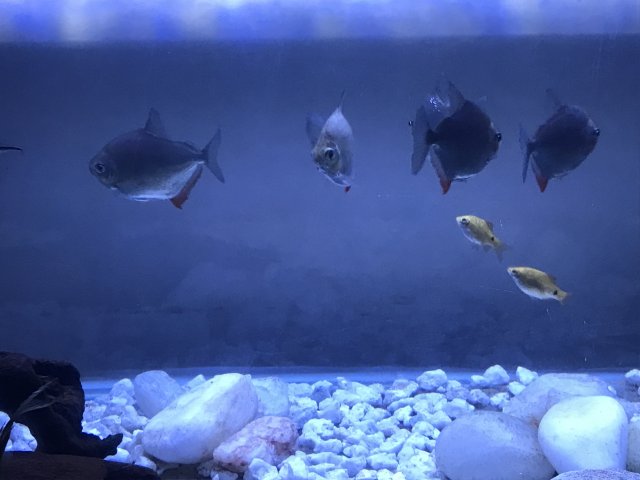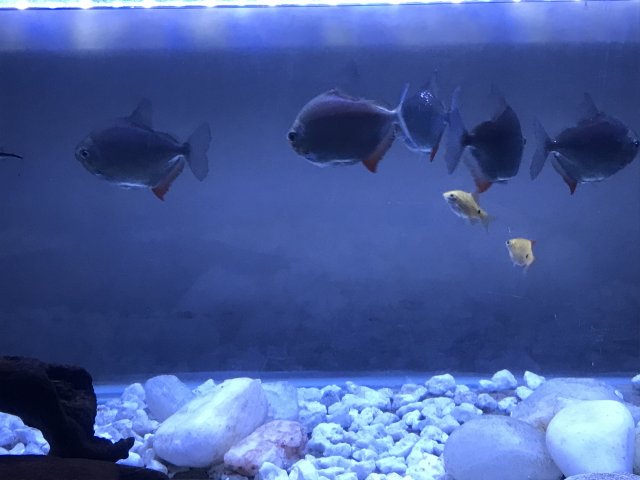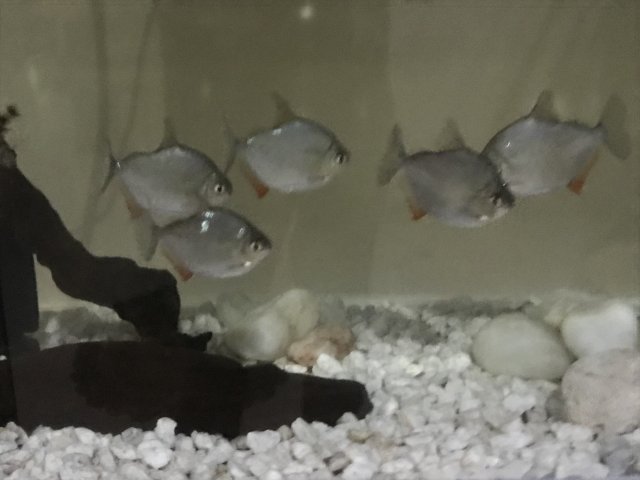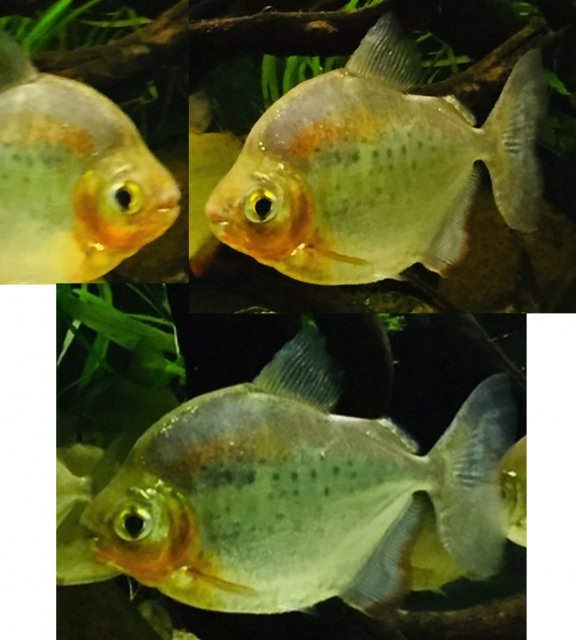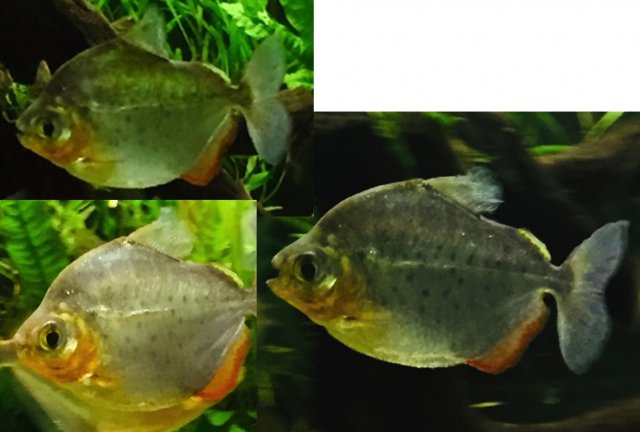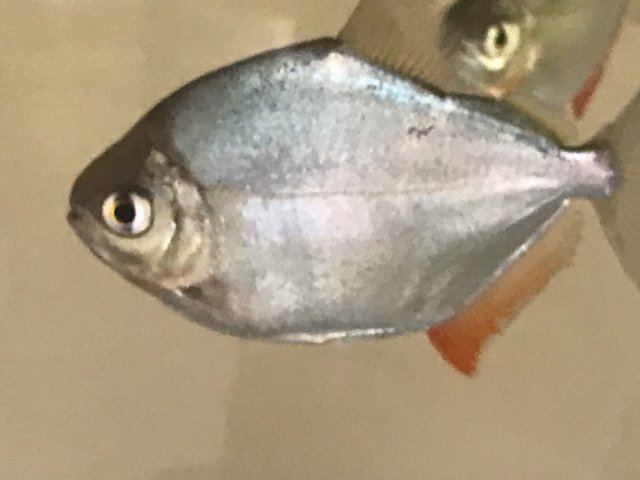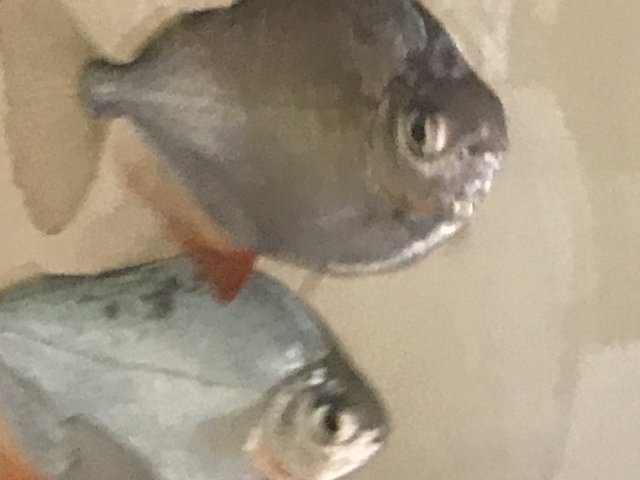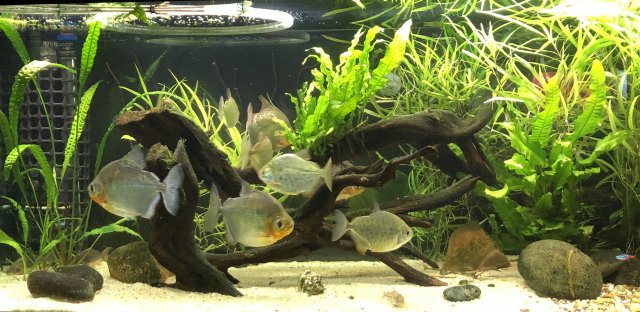I think your fish may grow a little more, but not much or at all. But they will probably will heft up some.
If the tank is ~35gal, you are way overstocked IMHO, even if it is just the SDs. And then you have a cichlid (looks young, so still growing?), some catfish and a couple of barbs. Too much. Even though the SDs look good now I don't believe that stock is sustainable longterm. If they grow more...not good. I discourage adding any more fish, and suggest to choose what to keep and to move the rest elsewhere. And better yet, they will be happier in a larger tank if possible. Water changes are extremely important, the more water changed the better.
I kept 4 full grown Metynnis +4 2-3inch youngsters in a 4 foot, 75gallon tank for a few years. It was possible and sort of worked, but in reality the tank was too small (I knew it but kept convincing myself otherwise because I didnt have another tank). It is the very tank and fish in the last picture above. During weekly water changes, it was tough not to have the fish crash against walls and decor. The same fish are in a 6 foot, 115g tank, since almost a year ago. It is far better, particularly during water changes, but I would prefer to have an even larger tank. I would say the length of the tank is the most important dimension to maximize, and next the width (front to back); the height is also important but less so. And the larger the water volume, the more stable the water parameters.
The fact that you have an all-female group reduces a little the effect of the small tank, because there is no sexual tension. In my tank, there were 3 adult males and a single adult female; she was constantly being harassed (even though she was tough and defended herself), but she was stressed and her health was declining; the youngsters did not play much of a role, as if they didnt exist in the eyes of the adults. In the 6 foot tank, harmony reigns among the 8 fish, even though the youngsters are now full grown. They are all healthy and look happy. There is sexual display and activity, but also places to go. Also, the fact that there are now 2 other mature females (though different species) goes a long way in greatly reducing sexual pressure on any single individual.
Food - They will eat anything but for good health, a varied diet is necessary, including lots of both plant and animal matter. I don't expect anybody to feed like I do, but I describe it below and you are welcome to think anything about it.
I only feed 3-4 days per week, but on the days I don't feed, I hang pieces of nori sheets from clips in the morning, which are eaten within seconds. The actual feeding I give is a rotation of a long list of items, and on each day they get a bit of 2-3 of the list below, and I keep rotating:
Nori sheets; duckweed (live, always present within floating corral at surface); unsalted roasted sunflower seeds; garbanzos & guandules; cucumber; lettuce (rarely anymore); crushed dried insects (mainly crickets and mealworms); flake food (spirulina, multiworm, bloodworm); pellets (I have 10 different kinds, both insect/worm-based and veggie-based); live earthworms; frozen cubes (mysids, bloodworm, brine shrimp); Repashy Igapo (insect based).
I believe that a diet of only fish is not good for them longterm as they need and love plant matter. I don't give this, but veggie bites similar to those offered to plecos are taken eagerly and munched on with much delight.
Finally, "long term" for these fish means decades! They live long lives if in good conditions. 3 of my fish are a documented 23 years old, but likely more like 26.
Current tank with same fish as above -->

Nori feeding and floating corral -

Good luck!



